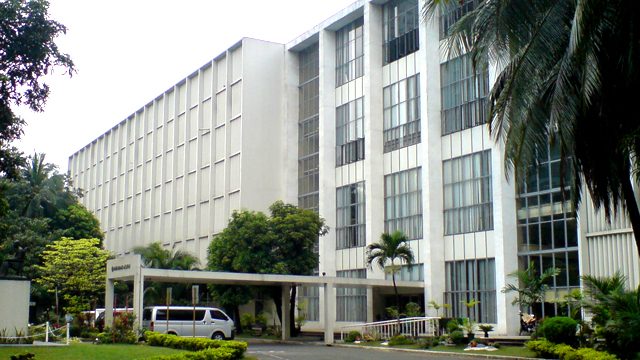SUMMARY
This is AI generated summarization, which may have errors. For context, always refer to the full article.

MANILA, Philippines – August 12 marks the anniversary of the National Library of the Philippines (NLP).
As a growing repository of knowledge and history, it has withstood the test of time, serving several generations of Filipinos. Located on TM Kalaw Street, Ermita, the library houses a vast collection of resources ranging from letters written by Emilio Aguinaldo to a collection of Jose Rizal’s manuscripts and illustrations, to newspaper headlines today.
Check out some interesting facts about our own national library:
1. It’s been around since the Spanish period.
Formerly known as the Museo-Biblioteca de Filipinas, the National Library was founded on August 12, 1887 under a royal decree issued by the Spanish government. The library was formally inaugurated on October 24, 1891.
2. It has gone through several name changes over the years.
During the American period, Museo-Biblioteca de Filipinas was abolished and the American Circulating Library (ACL) was established in its place.
In 1909, the ACL was renamed the Philippine Library under Public Act No. 1935. In 1916, it was extended as the Philippine Library and Museum, after merging with the Division of Archives, Patents, Copyrights and Trademarks, and the Law Library of the Philippine Assembly then.
It was named the National Library in 1928, and was later renamed the Bureau of Public Libraries in 1947 under the Office of the President. The Bureau reverted to its old name in 1964. The NLP got its present name in 2010 pursuant to Republic Act No. 10087.
3. Pedro Paterno was once a director of the library.
Pedro Paterno was assigned director when the library was inaugurated. Paterno was the author of “Ninay”, the first Philippine novel. His name is also engraved in history as one of the people who played a key role in the birth of the Philippine nation after leading negotiations in the Pact of Biak-na-Bato and after being elected president of the Malolos Congress in 1898.
4. It holds millions of pages of Philippine materials.
According to their annual report, the National Library has preserved over 98 million pages worth of Filipiniana materials, and has acquired 21,000 volumes of new library materials as of the first quarter of 2018.
With a digitalized catalog system and the Philippine eLibrary, readers can already access resources through the internet. The library also allows copyright registration, as well as International Standard Registration for books, music, and serials for Filipino makers.
5. No more NLP library card is required to enter.
Since August 2016, the National Library has opened its doors to the public for free without need for a library card. The NLP only requires one valid ID for registration in the IT division upon entering. – Rappler.com
Sources: Official National Library of the Philippines website, National Library of the Philippines Official Facebook page, and reports from the Conference of Directors of National Libraries in Asia and Oceania
Add a comment
How does this make you feel?
There are no comments yet. Add your comment to start the conversation.